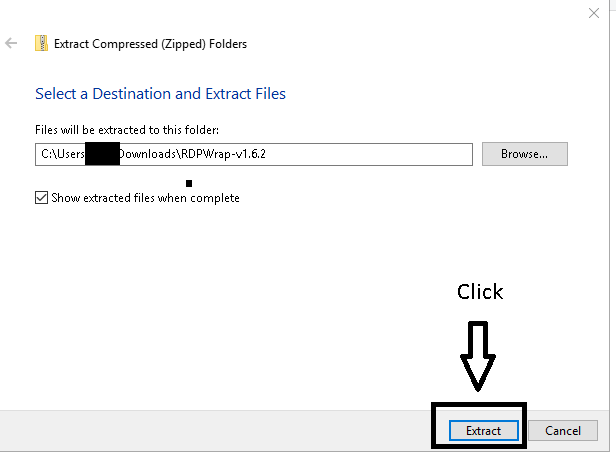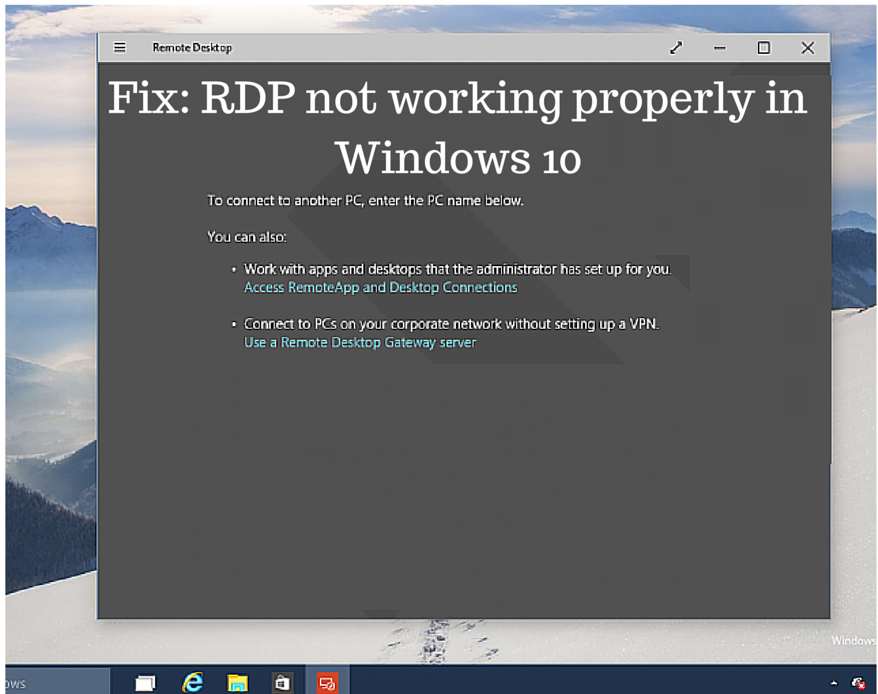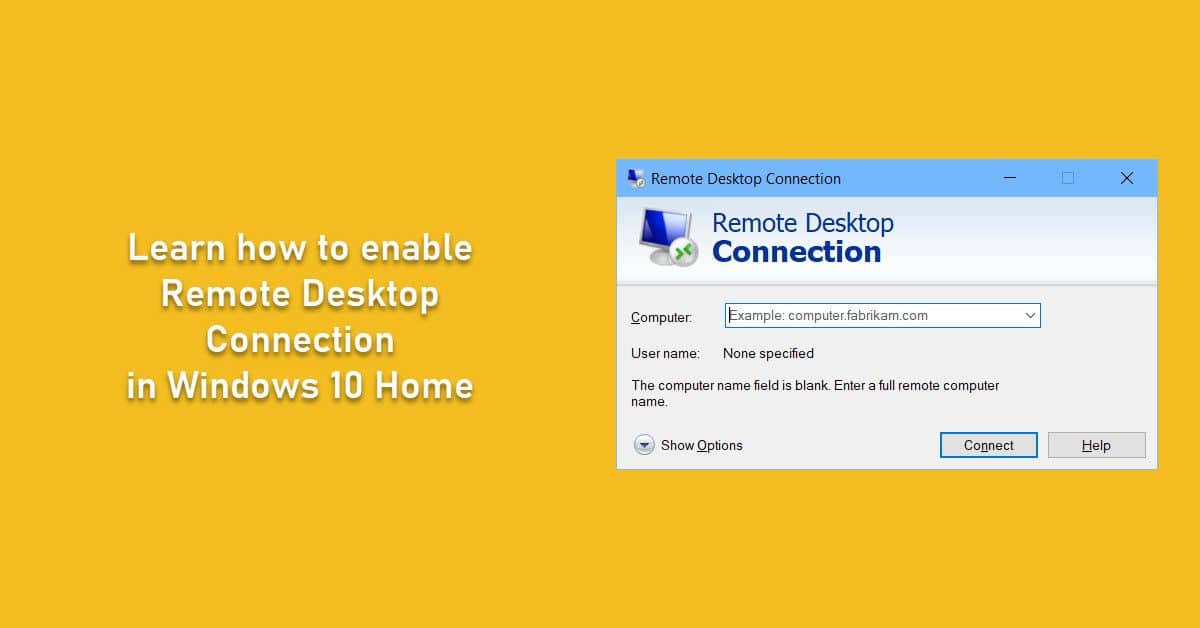- I have connected to the 2012 Server from a couple of Windows 7 and Windows 10 workstations, and they can all connect simultaneously without issue. I know that the RDP that's included in Windows CE 6.0 is an older version, but I was hoping there was a way to adjust the security requirements on the 2012 server to allow the connection anyway as.
- The Remote Desktop Connection 6.0 client update helps you redirect Plug and Play devices that support redirection. Terminal Services Remote Programs. Remote Programs are a feature of Windows Server Terminal Services that lets client computers connect to a remote computer and use programs that are installed on it.

To work around this issue if you have not installed Windows Server 2003 Service Pack 2, uninstall the version of Remote Desktop Client 6.0 that was released before April 24, 2007, install the version of Remote Desktop Client 6.0 that was released on April 24, 2007, and then install Windows Server 2003 Service Pack 2. Remote Desktop Connection 6.0 prompts you to accept the identity of the server if the identity of the server cannot be verified. You may be unable to use a smart card to log on to Remote Desktop Connection 6.0, even though you could use a smart card to log on to Remote Desktop Connection 5.x. Install the client. Choose the client that matches the version of Windows. The new Remote Desktop client (MSRDC) supports Windows 10, Windows 10 IoT Enterprise, and Windows 7 client devices.
Symptoms
After you install the Remote Desktop Connection 6.0 client update (update 925876), you may experience one or more of the following symptoms:
Remote Desktop Connection 6.0 prompts you for credentials before you establish a remote desktop connection.
Remote Desktop Connection 6.0 prompts you to accept the identity of the server if the identity of the server cannot be verified.
You may be unable to use a smart card to log on to Remote Desktop Connection 6.0, even though you could use a smart card to log on to Remote Desktop Connection 5.x.
For more information about the Remote Desktop Connection 6.0 client update, click the following article number to view the article in the Microsoft Knowledge Base:
925876 Remote Desktop Connection (Terminal Services Client 6.0)
Workaround
To work around this problem, turn off the new features in Remote Desktop Connection 6.0 to revert to the features in Remote Desktop Connection 5.x. To do this, follow these steps:
Click Start, click Run, type mstsc.exe, and then click OK.
Click Options, and then click the General tab.
Click Save As, and then type a file name in the File name box.
Select the location where you want to save the remote desktop file, click Save, and then click Cancel.
Note The saved file has the .rdp file name extension.Click Start, click Run, type notepad, and then click OK.
On the File menu, click Open.
In the Files of type list, click All Files.
In the Look in list, locate and then click the file that you saved in step 4. Then, click Open.
Locate the line that resembles the following:
authentication level:i:nNote The n placeholder represents the current authentication level.
Change the authentication level to 0 so that the line becomes the following:
authentication level:i:0Note When you set the authentication level to 0, RDP 6.0 does not check for server authentication.
Add the following line to the end of the file:
enablecredsspsupport:i:0Note When this line is present, you do not have to provide credentials before you establish a remote desktop connection.
On the File menu, click Save.
To connect by using Remote Desktop Connection, run the file that you saved in step 12.
Note After you follow these steps, the new security features that Remote Desktop Connection 6.0 provides are removed. Additionally, Remote Desktop Connection 6.0 becomes incompatible with Windows Vista-based computers that have the Allow connections only from computers running Remote Desktop with Network Level Authentication option enabled in the system properties.

This article describes the Remote Desktop Connection (RDC) client requirements to use Terminal Services Web Access in Windows Server.
Original product version: Windows Server 2012 R2
Original KB number: 943887
Introduction
Terminal Services (TSWeb) in Windows Server 2008 and Remote Desktop Services (RDWeb) in Windows 2008 R2 are role-based services that let users start RemoteApp and Desktop Connection from a web browser. RemoteApp and Desktop Connection provides a customized view of RemoteApp programs and virtual desktops to users. When a user starts a RemoteApp program, a Terminal Services session is started on the Windows Server 2008-based terminal server that hosts the RemoteApp program.
To start a RemoteApp program, a user connects to a website that is hosted on the Windows Server 2008-based TS Web Access server. When the user connects to the website, a list of available RemoteApp programs appears. Additionally, TS Web Access lets users connect to the remote desktop of any server or client computer on which the user has the required permissions.
Resolution
If you are using Windows Server 2008 R2, you must use RDC client version 7.
You must have the RDC client version 6.1 installed to use TS Web Access with the following operating systems:
Windows Server 2008
Windows Vista with Service Pack 1 (SP1)
Windows XP with Service Pack 3 (SP3)
Note
RDC 6.1 (6.0.6001) supports Remote Desktop Protocol 6.1.
If you are experiencing this issue on a Windows Vista-based computer, you must have Windows Vista Service Pack 1 installed on your computer.
If you are experiencing this issue on a Windows XP-based computer, you must have Windows XP Service Pack 3 or RDC 6.1 installed on your computer.
Advanced Information
Information for administrators

When users try to connect to TS Web Access from a computer that has an earlier version of the RDC client installed, they will receive an error message that includes a URL. This URL points the user to a webpage where they can find more information.
Currently, the URL that is included in the error message points to this Knowledge Base article. However, you can change the URL that is included in the error message. To modify the URL, use one of the following methods.
Method 1: Use an ASP.NET application setting
To change the URL that is included in the error message, use an ASP.NET application setting. To do this, follow these steps:
Click Start, click Run, type Inetmgr.exe, and then clickOK.
Expand the server name, expand Sites, expand Default Web Site, and then click TS.
Note
By default, TS Web Access is installed in the default website.
Under
ASP.NET, double-click Application Settings.In the actions pane, click Add.
In the Add Application Setting dialog box, type rdcInstallURL in the Name box.
In the Add Application Setting dialog box, type the URL for the webpage that includes more information about how to use TS Web Access, and then click OK.
Method 2: Edit the Web.config file
To change the URL that is included in the error message, you can edit the Web.config file for the TS Web Access website. To do this, follow these steps:
Open the Web.config file for the TS Web Access website in Notepad.
Note
By default, the Web.config file for the TS Web Access website is located in the Webts folder.
Locate the <appSettings> section in the Web.config file.
In the <appSettings> section, add the following entry:
<add key='rdcInstallUrl' value='
http://URL' />Note
The URL placeholder is the URL for the webpage that includes more information about how to use TS Web Access.
On the File menu, click Save.
Exit Notepad.
Information for non-administrators
If you are not an administrator, contact the system administrator if you have problems when you use TS Web Access. For example, the system administrator can help you obtain and install an updated version of the RDC client.
More information
Related Topic
Install Rdp 6.0 Windows 10 32-bit
- For more information about security update for Remote Desktop Client version 6.0 and 6.1, see Microsoft Knowledge Base article 956744: MS09-044: Description of the security update for Remote Desktop Client version 6.0 and 6.1: August 11, 2009.
- Depending on your version of Windows Server, visit one of the following:
- The Remote Desktop Services home page (Windows Server 2008 R2) on the Windows Server TechCenter.
- The Terminal Services home page (Windows Server 2008) on the Windows Server TechCenter.
- Remote Desktop Services in Windows Server 2008 R2 in the Windows Server 2008 Technical Library.
- Terminal Services in Windows Server 2008 in the Windows Server 2008 Technical Library.

Install Rdp 6.0 Windows 10 Pro
Additional Resources
Install Rdp 6.0 Windows 10 64-bit
Click the following links to find more options if this article cannot resolve your problem:
